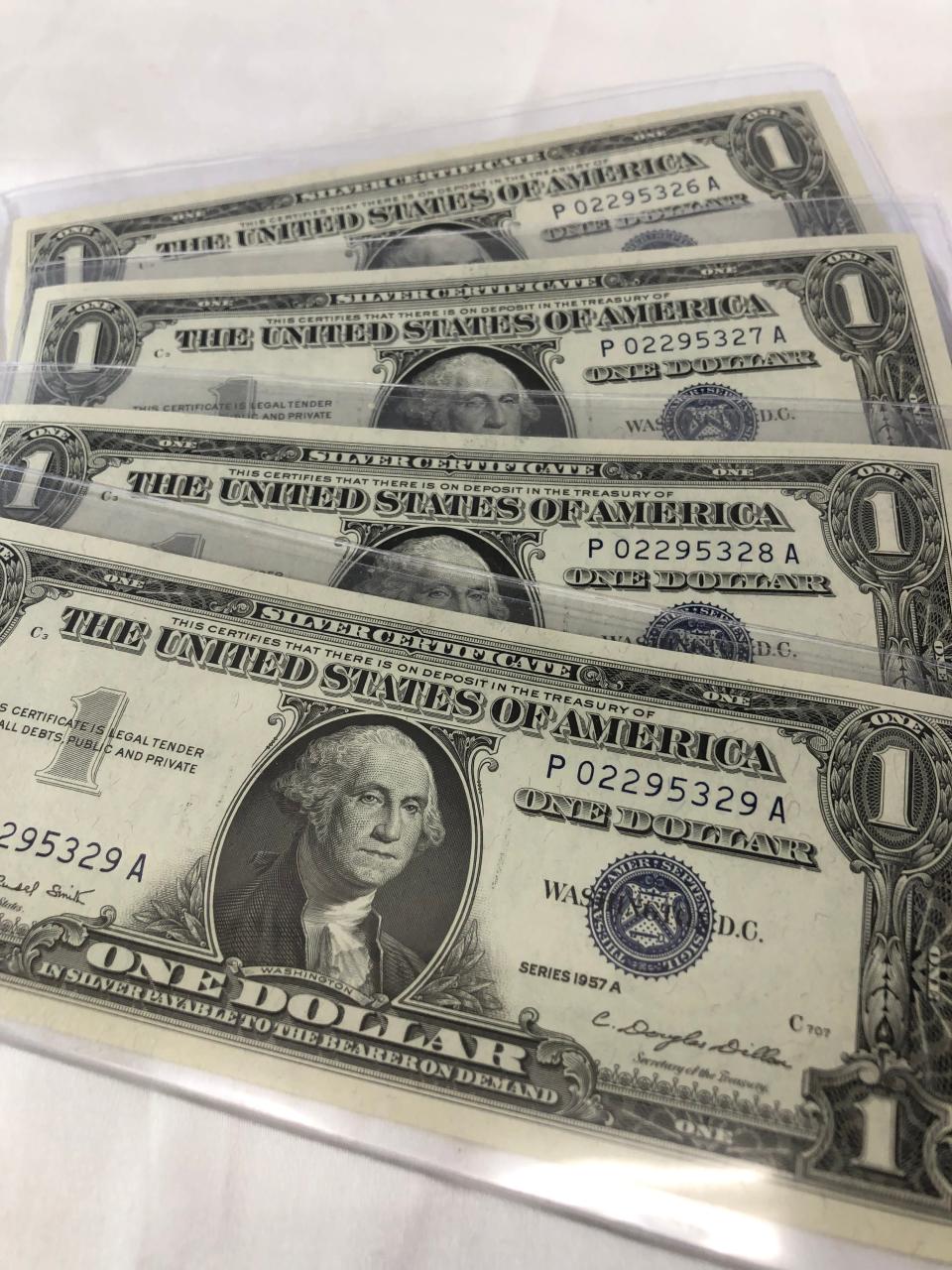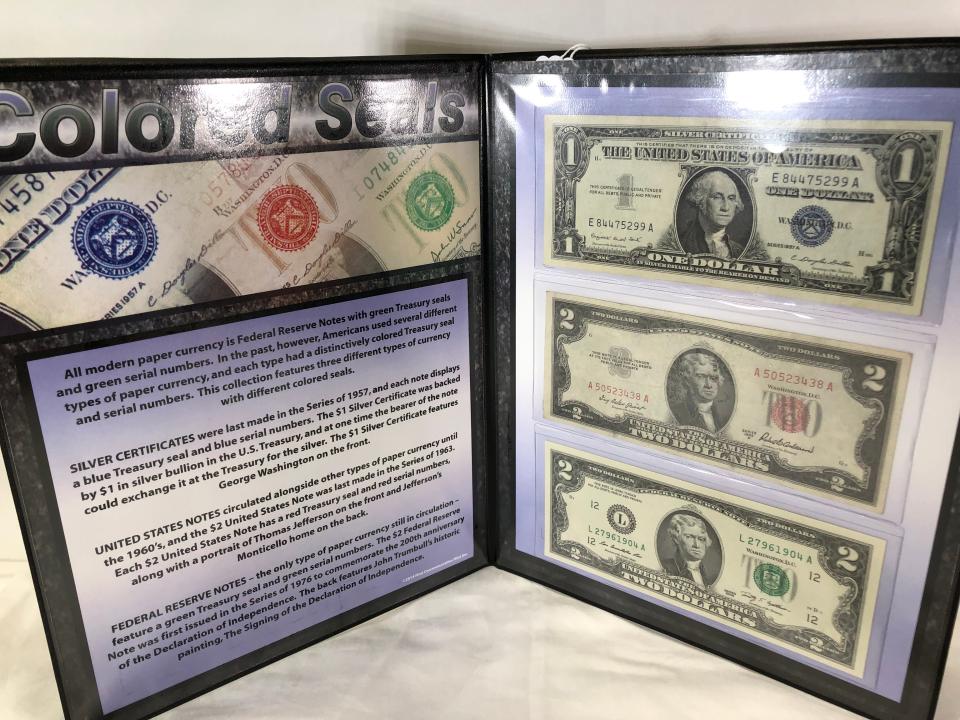Antiques: Turning paper into silver
Now that the holiday spending frenzy is over, sanity has returned and more cautious spending has largely reasserted itself. Between the high cost of everything and the extra pressure to spend, the dollars seem to just melt away during year-end.
While we're on the subject of dollars, it's interesting to note that old American currency is enjoying something of a resurrection among collectors. As improbable as it seems, those of us with some miles under the hood will remember a time when you could trade in your Silver Certificate dollars for real silver. Needless to write, those days are long gone, but let's revisit them anyway.
First of all, a silver certificate is basically a note backed by real silver and represents ownership of same. During the period in which it was allowed, they could be redeemed for real silver dollars or bullion at some agreed-upon rate. Countries such as Cuba and the Netherlands issued silver-backed currency, but no nation did so longer than the USA.

Here, they were first printed in 1878, and remained redeemable in silver until 1968, a total of 86 years. Today, they're still legal tender, and a few still turn up in circulation — but not very often. If you find one, however, don't try to redeem it for silver coin. Won't happen.
In America, the original idea of silver certificates came about following the Mint Act of 1873, today a mostly forgotten bit of legislation but one that created waves for many decades. Basically, it gave owners of gold the right to mint their bullion into money while eliminating the right of silver owners to do the same. Proponents of the Act argued that the rich new silver mines then just coming online would put too many silver coins in circulation, thus fueling inflation.
The effect was to create something of a gold standard while penalizing producers of silver. When finally signed by president Ulysses S. Grant, the Act caused a furor, and ultimately resulted in the creation of silver certificates largely as a sop to the critics.

Initially, silver certificate currency was issued in denominations from $10 to $1,000 but soon thereafter smaller denominations of $1, $2, and $5 were released. These were considerably larger bills than we have today, but in 1928, all American currency was redesigned and issued in smaller sizes. Thereafter, only the $1, $5, and $10 bills carried the silver certificate imprint until production of even those was halted entirely in 1968.
So as with most collectibles today, the value of silver certificates is largely a matter of condition and scarcity. Among the rarest are certain series from 1928, some of which can be worth thousands of dollars. If you have several, collectors also like sequential serial numbers and those with a star indicating a replacement banknote.
All the same, condition is key. While a well-circulated silver certificate might be worth only a few dollars over its face value, those in crisp uncirculated condition can be worth a huge premium. Even if you can't change silver certificates into real silver anymore, the bills themselves will always have value.
Mike Rivkin and his wife, Linda, are longtime residents of Rancho Mirage. For many years, he was an award-winning catalogue publisher and has authored seven books, along with countless articles. Now, he's the owner of Antique Galleries of Palm Springs. His antiques column appears Sundays in The Desert Sun. Want to send Mike a question about antiques? Drop him a line at info@silverfishpress.com
This article originally appeared on Palm Springs Desert Sun: Antiques: Turning paper into silver

